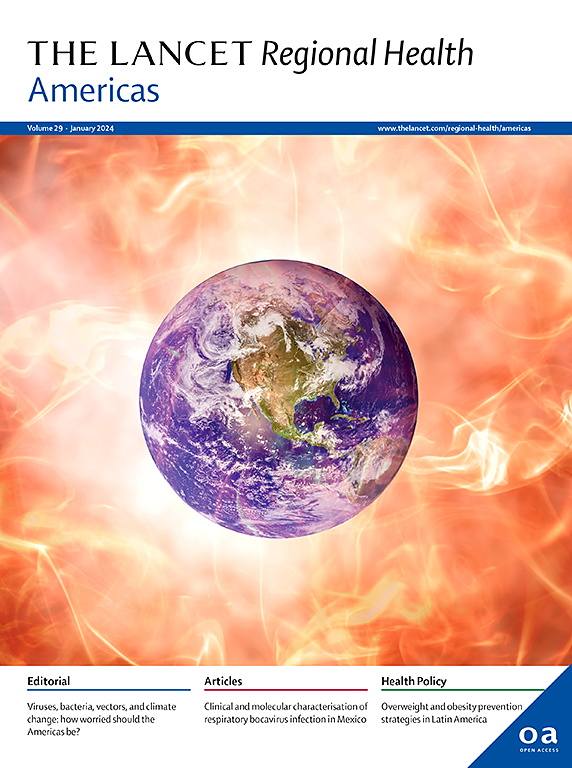Twenty years of breast cancer epidemiology and treatment patterns in São Paulo, Brazil—observed versus expected treatment utilization in a retrospective cohort
IF 7
Q1 HEALTH CARE SCIENCES & SERVICES
引用次数: 0
Abstract
Background
Over half of new breast cancer cases occur in low- and middle-income countries, with disparities in survival outcomes due to late-stage diagnoses, healthcare access gaps, and biological differences. This retrospective cohort study examined trends in survival, stage distribution, and treatment utilization for breast cancer in Brazil, an upper middle-income country.
Methods
Patients newly diagnosed with invasive breast cancer between 2000 and 2019 were identified from São Paulo’s Oncocenter Foundation registry. Data on demographics, diagnosis stage, diagnosis-to-treatment intervals, and treatments received were analyzed in 5-year blocks. Median overall survival was estimated using the Kaplan–Meier method. Actual treatment utilization was compared to model-based estimates of optimal utilization derived from the National Comprehensive Cancer Network Guidelines’ Enhanced and Maximal Resource Modules.
Findings
We included 125,005 patients, with a median age at diagnosis of 55 years (interquartile range 46–75); 99.4% (n = 124,218) were female. The proportion with early disease remained stable over time (61.7% in 2000–2004, 62.4% 2015–2019). Median overall survival increased from 10.7 years (2000–2004) to 11.7 years (2010–2014); median survival for 2015–2019 was not reached. Median overall survival was 20.8, 15.1, 6.8, and 2.0 years for stages I–IV, respectively. Median diagnosis-to-treatment interval more than doubled over time. From 2000 to 2004 to 2015–2019, chemotherapy use decreased from 71.5% to 68.9%; radiotherapy use decreased from 64.0% to 56.5%, and surgery utilization decreased from 80.3% to 74.8%; endocrine therapy use varied between 54% and 62%. Gaps between observed and model-based estimates of treatment utilization were seen across all stages.
Interpretation
Overall survival in patients with breast cancer in São Paulo has improved over time. However, significant treatment gaps and increasing diagnosis-to-treatment intervals suggest systemic barriers to optimal care delivery.
Funding
No funding received.
巴西圣保罗20年乳腺癌流行病学和治疗模式:回顾性队列观察与预期治疗利用
背景:一半以上的新发乳腺癌病例发生在低收入和中等收入国家,由于晚期诊断、医疗保健可及性差距和生物学差异,生存结果存在差异。这项回顾性队列研究调查了巴西这个中上收入国家乳腺癌的生存、分期分布和治疗利用趋势。方法从圣保罗肿瘤中心基金会登记处确定2000年至2019年间新诊断为浸润性乳腺癌的患者。统计数据、诊断阶段、诊断到治疗间隔和接受治疗的数据以5年为单位进行分析。使用Kaplan-Meier法估计中位总生存期。将实际治疗利用率与基于模型的最佳利用率估计进行比较,该模型来自国家综合癌症网络指南的增强和最大资源模块。我们纳入了125,005例患者,诊断时的中位年龄为55岁(四分位数范围为46-75岁);99.4% (n = 124,218)为女性。早期发病比例保持稳定(2000-2004年为61.7%,2015-2019年为62.4%)。中位总生存期从10.7年(2000-2004年)增加到11.7年(2010-2014年);2015-2019年的中位生存期未达到。I-IV期的中位总生存期分别为20.8年、15.1年、6.8年和2.0年。诊断到治疗间隔的中位数随着时间的推移增加了一倍多。从2000 - 2004年到2015-2019年,化疗使用率从71.5%下降到68.9%;放疗使用率从64.0%下降到56.5%,手术使用率从80.3%下降到74.8%;内分泌治疗的使用率在54%到62%之间。在所有阶段,观察到的治疗利用估计与基于模型的估计之间存在差距。解释:随着时间的推移,圣保罗地区乳腺癌患者的总体生存率有所提高。然而,显著的治疗差距和越来越多的诊断到治疗间隔表明,最佳护理提供的系统性障碍。没有收到资金。
本文章由计算机程序翻译,如有差异,请以英文原文为准。
求助全文
约1分钟内获得全文
求助全文
来源期刊

Lancet Regional Health-Americas
Multiple-
CiteScore
8.00
自引率
0.00%
发文量
0
期刊介绍:
The Lancet Regional Health – Americas, an open-access journal, contributes to The Lancet's global initiative by focusing on health-care quality and access in the Americas. It aims to advance clinical practice and health policy in the region, promoting better health outcomes. The journal publishes high-quality original research advocating change or shedding light on clinical practice and health policy. It welcomes submissions on various regional health topics, including infectious diseases, non-communicable diseases, child and adolescent health, maternal and reproductive health, emergency care, health policy, and health equity.
 求助内容:
求助内容: 应助结果提醒方式:
应助结果提醒方式:


